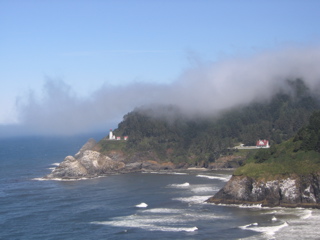
May - August 2005,
Department of Mathematical and Statistical Sciences, University of Alberta

|
|
Experiments/Research performed by Chris Voegeli, May - August 2005, Department of Mathematical and Statistical Sciences, University of Alberta |
When a body of fluid is stratified the fluid density effectively decreases from the bottom to the top.If the rate at which the density changes with heigth is linear the fluid is said to be uniformly stratified.The stratosphere is strongly stratified, which is why airplanes chose to fly through it for it's stabilty.
When a homogenous body of fluid of a certain density moves horizontally within a stratified fluid it is called an intrusion. If this propagation moves along the base of a stratifeid or unstratified fluid it is called a gravity current. Typically an intrusion propogates along a fluid layer that has the same density.Although fluid dynamicists and engineers have studied gravity currents extensively, dynamics of intrusions in stratified fluids has had little exploration. Exploring intrusion dynamics will give insigths inot small scale phenomena in oceanography, metereology, and industry.
Once the tank is filled a conductivity probe traverses vertically through the tank to measure the density profile.
A gate was then inserted close to the left end of the tank and the fluid in this lock was well mixed. If the experiment called for the lock density to be the average density of the stratified fluid only dye was added. Otherwise some salt and dye was added to the lock so that when the gate is released the resulting intrusion would propagate below mid-depth.A video camera records the collapse of the lock fluid into the ambient and the resulting displacement of dye lines.
Every experiment that was done explored 4 parameters. Fluid depth(H), lock length(L), density of the bottom of stratified fluid body(PB), and density of fluid in the lock (PL).
Once the experiment was completed the film was then digitized and analysed. The analysis was done by taking horizontal time series (HTS) and vertical time series (VTS). These analyses were used to measure intrusion speed and size as well as internal wave speeds, amplitudes and wavelengths.
Analysis of our results reveals that the intrusion speed increases as more salt is added to the lock. We find the speed of waves in the tank increases at a greater rate when a small amount of salt is added, but the two speeds are the same by the time enough salt is added that the intrusion moves along the bottom of the tank. This helps explain why the intrusion stops propagating when it propagates between half-depth and the tank bottom: waves are able to carry energy away from the current in such cases.
This work is an extension of earlier experimental research into intrusions in two-layer and three-layer fluids:
Department of Math and Statistical Sciences, University of Alberta
Department of Earth and Atmospheric Sciences